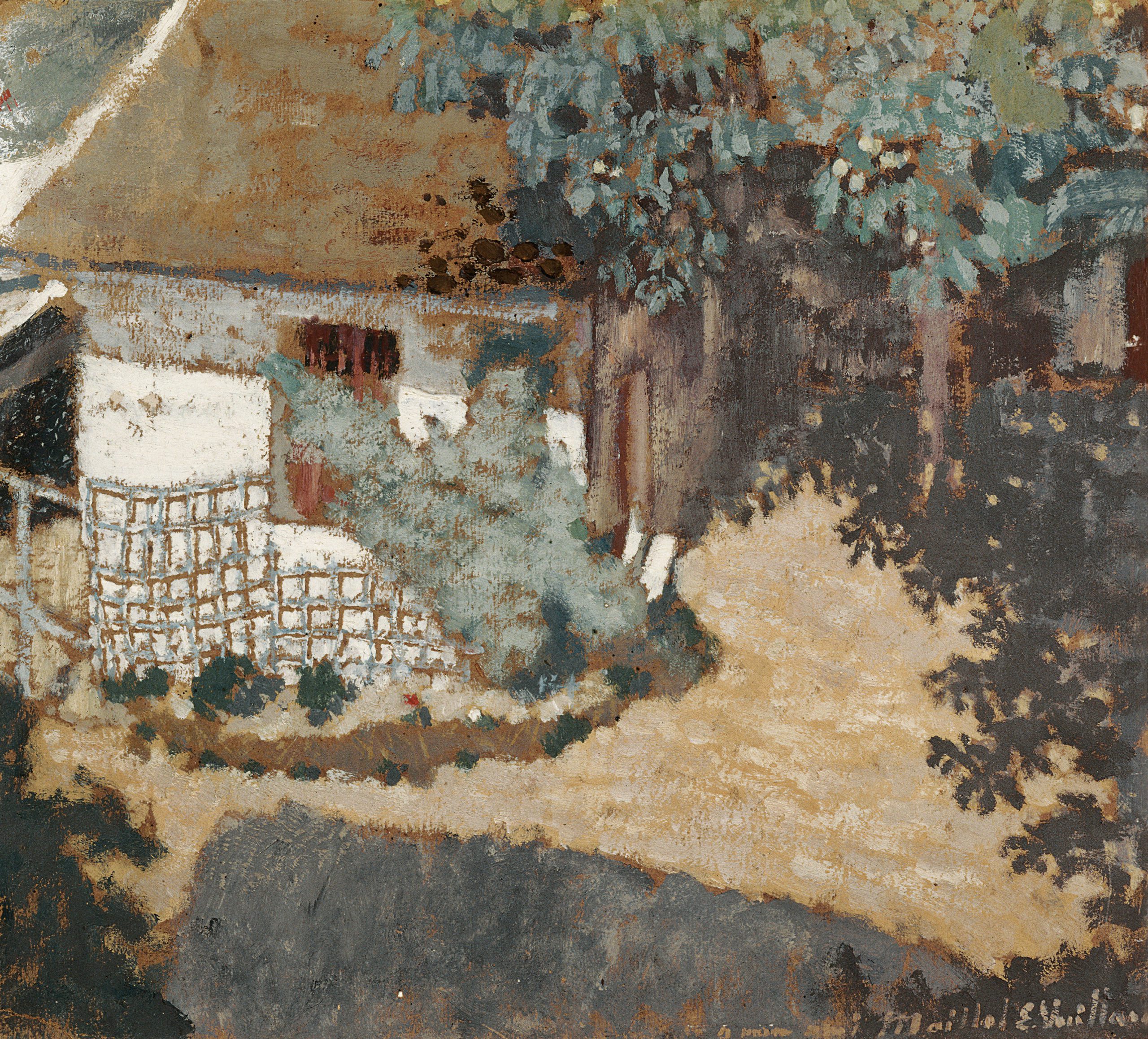Vuillard et l’art du Japon
Sous la direction de Sylvie Wuhrmann, Marina Ferretti et Corinne Currat
Publié en coédition avec les Éditions Snoeck, Gand
256 pages, 24 x 29 cm, 232 illustrations couleur
CHF 49.-

In the summer of 2023, the Fondation de l’Hermitage has revisited the work of Nabi master Édouard Vuillard (1868-1940), seen through the lens of Japonism that took Paris by storm at the turn of the 20th century. Centred on the delicate landscape held at the Hermitage, La Maison de Roussel à La Montagne (1900), the exhibition was showing the crucial influence of Japanese art on Vuillard’s work. The artist was a great collector of ukiyo-e prints, in which he found formats of a kind hitherto unknown in the Europe, radical compositions and framing, and unusual motifs, all of which greatly enriched his aesthetic language. Around a hundred paintings and engravings of scenes of everyday life and nature, created by Vuillard between the 1890s and the First World War, were shown here in dialogue with some fifty Japanese masterpieces.
JAPONISM IN VOGUE
It was almost certainly the great exhibition of Japanese art of 1890 at the École des Beaux-Arts that fostered Vuillard’s interest in Japanese aesthetics, which had hitherto remained largely unknown on the academy circuits. While all the Nabi painters appreciated Japanese art – and first among them Pierre Bonnard, who was known as the “Nabi japonard” – it was Vuillard who collected the greatest number of prints, acquiring a total of 180 for low prices at Le Bon Marché and Printemps. These works depicting landscapes, geishas or kabuki actors are by Japanese woodcut masters such as Hiroshige, Hokusai, Kunisada, Kuniyoshi, Eisan and Utamaro. Some of the works can be seen pinned to the wall in photographs of Vuillard’s studio living-room. His collection also contained several illustrated books, including volume 6 of Hokusai’s Manga.
REVITALISING THE CODES OF WESTERN PAINTING
In the years 1890-1914 Vuillard’s paintings, drawings and lithographs were deeply imbued with references to Japanese art. Like the ukiyo-e masters, he celebrated everyday life and nature. Avoiding any facile exoticism, he enriched his art by freely adopting Japanese codes, which offered him entirely new formats, viewpoints and asymmetrical compositions. Often he abandoned Albertian perspective, creating a sense of space through the bold juxtaposition of a close foreground with a distant background. He also turned away from portraying relief and three-dimensional shapes, instead exploring the potential of plain colours, arabesques and textural effects to create forms.
THEMED PRESENTATION
The exhibition was organised around the different genres in which Vuillard worked, seen through the lens of Japanese aesthetics. The artist’s highly personal approach was explored through Scenes of ordinary life, Screens and kakemonos, Prints and graphic arts and The Wonder of Nature. Also on display was a group of paintings by Vuillard’s Nabi friends who were greatly influenced by Japanese art, including Pierre Bonnard, Maurice Denis, Paul Élie Ranson and Félix Vallotton.

Sous la direction de Sylvie Wuhrmann, Marina Ferretti et Corinne Currat
Publié en coédition avec les Éditions Snoeck, Gand
256 pages, 24 x 29 cm, 232 illustrations couleur
CHF 49.-

Format mondial F4 (89,5 × 128 cm)
Œuvre : Édouard Vuillard, La Maison de Roussel à La Montagne (détail), vers 1900
Design graphique : Balmer Hählen
CHF 20.-